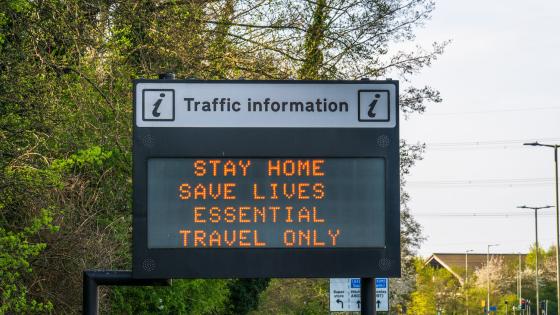Individuals faced with having to make the same decision but differing in their personal characteristics and circumstances often differ significantly in their perceptions of the costs and benefits – or risks and returns – involved in the decision and, ultimately, in their choice. At the same time, individuals making the same choice may do so for fundamentally different reasons. If for one person a certain choice is mainly due to a deeply held belief, for another person the same choice might be mainly driven by a strong personal taste, and for yet another person by their desire to conform – or cooperate – with others around them.
Disentangling these mechanisms, and separately quantifying their relevance for choice behaviour of different population groups, is fundamental to policymaking. Indeed, beliefs may be influenced by information or sensitisation interventions, as well as via monetary or non-monetary incentive schemes. Preferences, on the other hand, may be less malleable and policies targeting them more controversial (e.g. Manski 2004, Fuster and Zafar 2022). Moreover, if individuals’ choices depend on the beliefs and/or choices of those around them, a policy targeting the behaviour should take these social effects into account (e.g. Manski 2000, Durlauf and Ioannides 2010).
A number of papers have separately investigated the roles of beliefs, preferences, and social effects on behaviours related to COVID-19 (e.g. Muller and Rao 2021, Bundorf et al. forthcoming). In Conti and Giustinelli (2023), we study them jointly within a coherent framework. We document substantial heterogeneity in compliance to the ‘stay at home’ guidance issued by the UK authorities during the first COVID-19 lockdown,
and show that this heterogeneity is related to differences in risk perceptions, preferences, and behavioural responses to others. Such differences are themselves associated with citizens’ personal characteristics and circumstances, implying that one size does not fit all: the design of public health policies should take explicitly into account behaviour-relevant heterogeneity in citizens’ beliefs, preferences, and responses to others.
The determinants of citizens’ compliance with the lockdown rules
According to (Briscese et al. forthcoming), during the COVID-19 pandemic, potential motives underlying citizens’ compliance included “standard dilemmas similar to those concerning the contribution to public goods [...] different ways in which people process information, weigh the likelihood of different events, and consider the behaviours and perceptions of those around them”.
In a recent paper (Conti and Giustinelli 2023), we investigate these and related motives within a single framework, by combining a formal model of choice under subjective risk with rich survey data on respondents’ personal characteristics and circumstances, and on their subjective perceptions of the risks and benefits (henceforth ‘beliefs’) associated with alternative compliance behaviours by themselves and others around them.
Our framework and data enable us to quantify the utility trade-offs underlying compliance and to investigate how preferences and beliefs vary across individuals. Our approach further allows us to decompose observed differences in compliance behaviour across groups into a part that is attributable to differences in preferences and a part attributable to differences in beliefs, and to quantify the monetary compensation required for different groups to comply. Finally, we investigate how individual compliance responds to the compliance behaviour of surrounding others and how the latter varies by personal characteristics and circumstances.
Differences in preferences, beliefs, or both?
During the first UK lockdown, citizens faced intuitive trade-offs between the costs and benefits of non-compliance. The largest cost of deviating from the stay-home rule was the disutility of dying from COVID-19 and the psychological cost of being caught transgressing, and the largest benefit from deviating was preserving their mental health. Yet, significant heterogeneity exists across groups.
Notably, we show that the well-documented higher compliance by women than men (e.g. Galasso et al. 2020, Lin et al. 2021, Papageorge et al. 2021) is due to gender differences in both preferences and beliefs. For example, among the costs of compliance, men have a greater disutility from becoming physically unfit, and women from suffering a deterioration in their relationships. In terms of beliefs, men have lower perceived risks of non-compliance than women for almost all risks we analyse.
The higher compliance by vulnerable citizens than non-vulnerable ones in our sample, on the other hand, is mainly driven by differences in preferences between the two groups.
For example, vulnerable individuals have significantly larger disutilities of contracting the coronavirus and infecting people they live with, and a larger utility of avoiding the deterioration of relationships with others.
Furthermore, the vulnerable assign significantly higher risks and significantly lower returns to deviating from self-isolation. For example, they have a higher perceived risk of not finding space in a hospital with intensive care, were they to experience acute COVID-19 infection; a higher perceived risk of dying from COVID-19; a lower perceived risk of being caught transgressing; and lower perceived returns to non-compliance for nearly all possible consequences of leaving home. In sum, the vulnerable perceive fewer trade-offs between potential costs and benefits of non-compliance than the non-vulnerable, leading to their much higher observed compliance rates.
Monetary incentives
According to our estimates, approximately a quarter (25%) of our study participants would require compensation to isolate (£300–350 over four weeks, on average), while the others would be either indifferent or would be willing to pay. However, the proportion of those requiring compensation as well as the required compensation amount vary significantly across groups. For example, the vulnerable are less likely to need compensation (22%) and also require below-average compensation (£169–206 over four weeks). Men, too, are less likely to need compensation (20%) but require above-average compensation (£466–523). Interestingly, individuals who have already experienced COVID-19 are more likely to need compensation (26–27%) and require above-average compensation (£356–412).
Of particular relevance for the public debate at the time, and for policy more generally, is the finding that individuals on a low income are less likely to need compensation (21%) but would require above-average compensation (£556–577 over four weeks). This amount is in the same ballpark as the amount granted by the UK government in a trial phase (£130 over 10 days), but substantially lower than the amount eventually granted under the support regime (£500 over 10 days). Our model-based estimates of the compensation for low-income individuals align reasonably well with the amount provided by the UK government within the Test and Trace Support Payment scheme for people on low incomes who had to self-isolate, thus providing a sound basis for the use of financial support to increase compliance. At the same time, our findings emphasise the importance of heterogeneity: indiscriminate use of financial incentives to all would be useless, if not harmful, and inefficient.
Responses to others’ behaviour
In general, citizens’ compliance behaviour is strongly interdependent (e.g. Woodcock and Schultz 2021). However, we show that the direction and strength with which individual compliance behaviour responds to the compliance behaviour of others can vary systematically by personal characteristics and circumstances. We investigate two main cases. The first is how individual compliance behaviour responds to the compliance behaviour of others living in the same local authority as the individual. The second uses the ‘Cummings affair’ as a case study to investigate how citizens’ compliance behaviour responds to the behaviour of a high-level public figure.
In the first case, we find that when others living in the same local authority as the respondent fail to comply – a high infection risk, low social trust scenario – individuals with no prior experience of COVID-19 and those with higher risk tolerance react by complying less, consistent with conditional (lack of) cooperation (e.g. Fischbacher et al. 2001). In contrast, vulnerable individuals react by complying more, consistent with a greater need for self-protection.
In the second case, we find that when a high-level public figure breaks the rules, supporters of the opposing political party (in this case, the Labour Party) react by complying less, consistent with a breach of institutional trust.
Conclusion
These findings emphasise the crucial need for design of public health policies to explicitly take into account behaviour-relevant heterogeneity in citizens’ beliefs, preferences, and responses to others.
References
Briscese, G, N Lacetera, M Macis, and M Tonin (2022), “The drivers of compliance with social-distancing measures at the time of Covid-19”, in G Scicchitano (ed.), Handbook of Labor, Human Resources and Population Economics, Springer, forthcoming.
Bundorf, M K, J DeMatteis, G Miller, M Polyakova, J L Streeter, and J Wivagg (2023), “Risk perceptions and private protective behaviors: Evidence from COVID19 pandemic”, Review of Economic and Statistics, forthcoming.
Conti, G, and P Giustinelli (2023), “For better or worse? Subjective expectations and cost-benefit trade-offs in health behavior: An application to lockdown compliance in the UK”, IFS Working Paper 23/19.
Daoust, J F (2020), “Elderly people and responses to COVID-19 in 27 countries”, PLOS ONE 15(7): e0235590.
Durlauf, S N, and Y M Ioannides (2010), “Social interactions”, Annual Review of Economics 2: 451–78.
Fischbacher, U, S Gaechterb, and E Fehr (2001), “Are people conditionally cooperative? Evidence from a public goods experiment”, Economics Letters 71: 397–404.
Fuster, A, and B Zafar (2022), “Survey experiments on economic expectations”, in R Bachman, G Topa, and W van der Klaauw (eds.), Handbook of Economic Expectations, Elsevier.
Galasso, V, V Pons, P Profeta, M Becher, S Brouard, and M Foucault (2020), “Gender differences in COVID-19 attitudes and behavior: Panel evidence from eight countries”, Proceedings of the National Academy of Sciences 117(44): 27285–91.
Lin, T, E A Harris, A Heemskerk, J J Van Bavel, and N C Ebner (2021), “A multi-national test on self-reported compliance with COVID-19 public health measures: The role of individual age and gender demographics and countries’ developmental status”, Social Science and Medicine 286: 114335.
Manski, C F (2000), “Economic analysis of social interactions”, Journal of Economic Perspectives 14(3): 115–36.
Manski, C F (2004), “Measuring expectations”, Econometrica 72(5): 1329–76.
Muller, S, and H A Rau (2021), “Economic preferences and compliance in the social stress test of the COVID-19 crisis”, Journal of Public Economics 194: 104322.
Papageorge, N W, M V Zahn, M Belot, E van den Broek-Altenburg, S Choi, J C Jamison, and E Tripodi (2021), “Socio-demographic factors associated with self-protecting behavior during the Covid-19 pandemic”, Journal of Population Economics 34: 691–738.
Woodcock, A, and P W Schultz (2021), “The role of conformity in mask-wearing during COVID-19”, PLOS ONE 16(12): e0261321.



